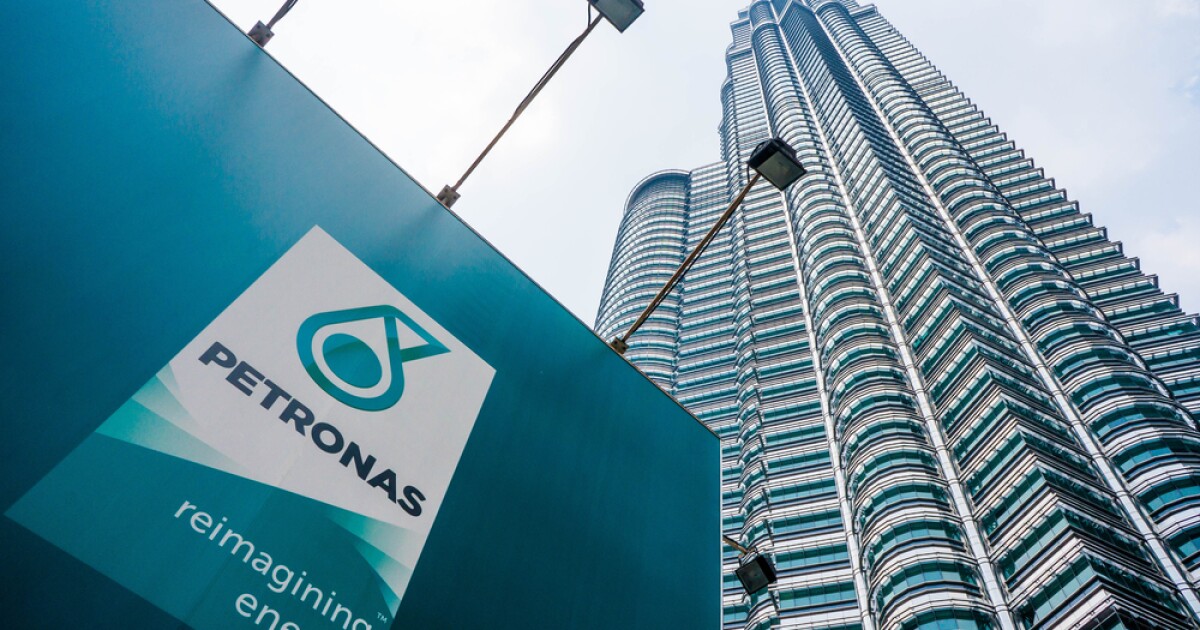Petronas could potentially become a major US LNG offtaker in the wake of the Malaysian government’s plan to buy around $3.4 billion worth of the fuel annually for five years as part of a wide-ranging trade deal that will lower US tariffs on Malaysian goods.
Trade and Industry Minister Tengku Zafrul Abdul Aziz told parliament on Aug. 4 that the Malaysia-US trade agreement will see Washington reduce the US import tariff on Malaysian goods from 25% to 19%, while Malaysia will spend up to $150 billion over five years on US equipment for its semiconductor, aerospace and data center sectors.
The package also includes $70 billion of Malaysian investments into the US and concessions on tariffs, duties and non-tariff barriers for American exporters.
The Malaysia-US deal comes on the heels of several similar trade agreements — between the US and EU and the US and South Korea. Those deals also feature US LNG buying but have been accompanied by doubts about purchasing targets.
LNG Pledge
US LNG has been a small part of Petronas’ portfolio to date. The ambitious new government commitment would position Petronas as a major US LNG offtaker alongside Asian buyers like Jera, Korea Gas, and China’s CNOOC.
Based on indicative long-term contract pricing of 115% of US Henry Hub plus a $3 per million Btu liquefaction fee, the yearly pledge equates to around 9.1 million-9.3 million tons per year of LNG at current prices.
Petronas already has a series of US LNG deals in place (see table).
CounterpartyVolume (million tons)Duration (years)FacilityTypeSignedStart-Up
Cheniere1.120Corpus ChristiSPA20182022
Kimmeridge120CommonwealthSPA2025Mid-2026
Venture Global120CP2SPA2025Between 2027 and 2029
Source: Energy Intelligence
Even factoring in the existing contract volumes, around 6 million tons/yr of new US supply will still be needed to meet the trade-driven purchase target. This suggests Petronas will have to either secure additional long-term SPAs or master sales agreements with other US developers or traders or rely heavily on spot and short-term procurement. Analysts expect LNG buying to start from late‑2025 to early‑2026 through the end of a five‑year window.
The move would signal a major change in Petronas’ LNG sourcing strategy.
The Malaysian state-owned firm has historically relied on its domestic production from the 30 million ton/yr Bintulu LNG complex in Sarawak, supplemented by equity supply from Australia, Egypt, and, from 2025, Canada’s Shell-led LNG Canada project. More US LNG would offer flexibility for trading and portfolio optimization, with f.o.b. cargoes that can be redirected to whichever market offers the best netback.
Trade Diplomacy
The commitment also aligns with broader Malaysian trade diplomacy. The US ran a $24.8 billion goods trade deficit with Malaysia in 2024, according to US government data. LNG, with its high unit value and immediate effect on trade flows, provides a quick-impact lever to address that imbalance.
While the tariff cut will benefit Malaysia’s key exports, including semiconductors and pharmaceuticals, it comes with trade-offs. Malaysia has agreed to cut or abolish duties on 98.4% of US imports, ease some non-tariff barriers, and drop a requirement for US tech platforms to contribute a portion of Malaysian revenues to a state fund.
For Petronas, the deal would deepen exposure to Henry Hub-linked pricing, a departure from the oil-indexed contracts that dominate its long-term sales. It also cements the company’s role in underpinning Malaysia’s geopolitical and trade relationship with Washington.
